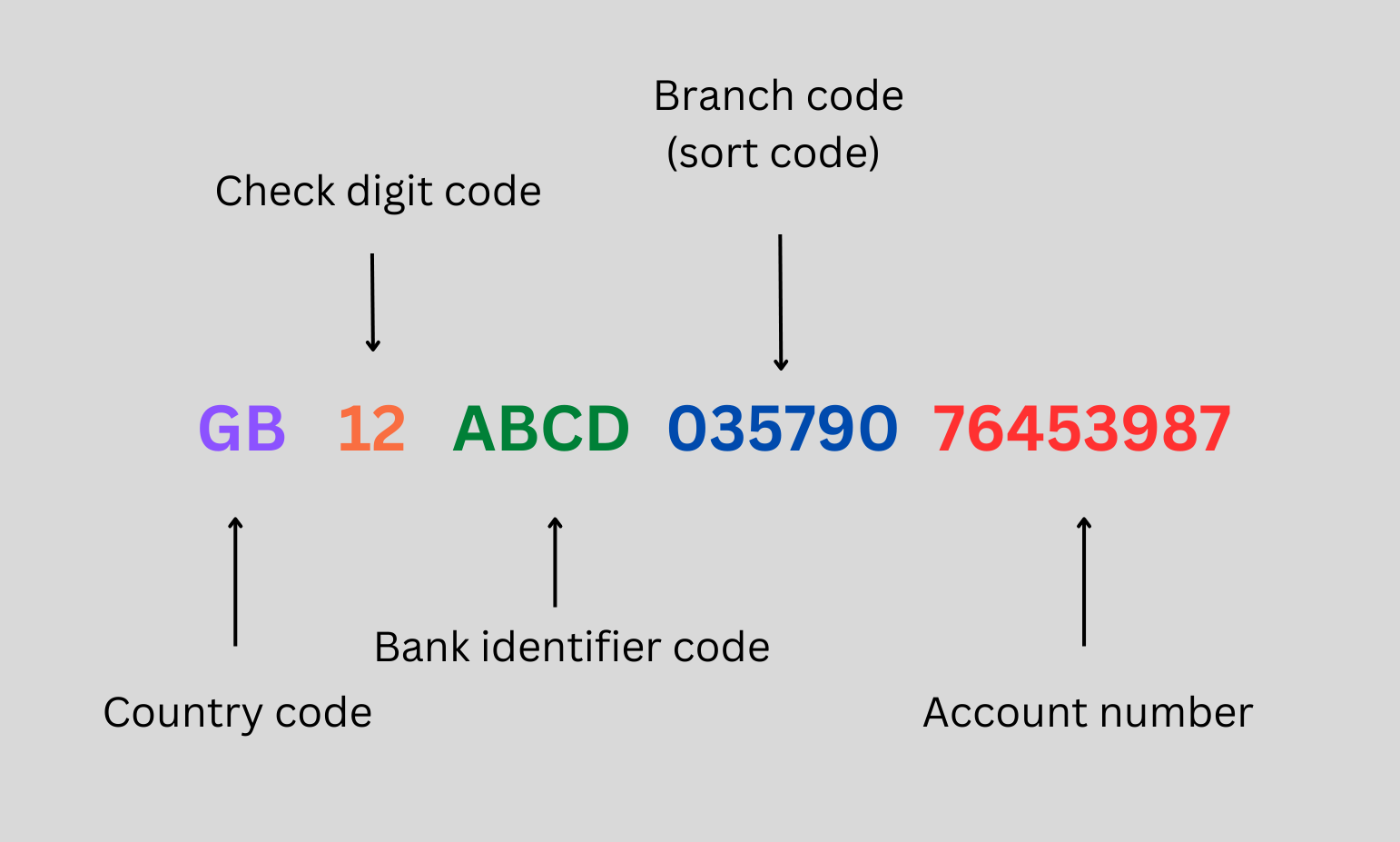Introduction
Structured products have gained significant popularity in the banking industry, offering investors a unique approach to diversify their portfolios and achieve specific financial goals. The concept of structuring is a fundamental aspect of modern banking, playing a crucial role in creating tailor-made investment vehicles that meet the needs of individual and institutional clients.
Structured products refer to a wide range of investments that combine traditional financial instruments like stocks, bonds, or derivatives with non-traditional elements such as options, swaps, or other customized features. This blending of different elements allows financial institutions to create products that can cater to specific risk-reward profiles and investment objectives.
The primary goal of structuring is to provide investors with more flexibility, enhance potential returns, and manage risks that align with their unique investment preferences. By incorporating multiple elements within a structured product, banks can create investment options that are not traditionally available in the market.
Moreover, structuring also plays a significant role in optimizing tax efficiency and ensuring compliance with regulatory requirements. The expertise of structuring professionals in understanding complex financial instruments and creating innovative solutions facilitates the design of products that remain within the boundaries of legal and regulatory frameworks governing the banking industry.
Overall, structuring in banking encapsulates the art of creating and customizing financial products to address the specific needs of investors while considering risk, return, tax implications, and regulatory requirements. By harnessing the power of structured products, investors can access unique investment opportunities that may not be available through traditional investment avenues.
Definition of Structuring
In the context of banking, structuring refers to the process of creating customized investment products that combine various financial instruments and features to meet specific investor needs. It involves the careful arrangement of assets and liabilities, incorporating risk management techniques, and designing products that align with the desired risk tolerance and return objectives of clients.
Structured products, as a result of this structuring process, are typically created by financial institutions such as banks and investment firms. These products are designed to offer investors exposure to different underlying assets, such as equities, commodities, or interest rate securities, while incorporating additional features that enhance the potential returns or mitigate risks.
When structuring a product, banks consider various factors like investment goals, time horizon, risk appetite, and market conditions. The final structure may involve blending traditional assets with derivative instruments, incorporating options or swaps to provide specific payoffs, or introducing features such as principal protection or leverage.
Structured products often have a predetermined maturity date and may be principal-protected, where the initial investment is guaranteed by the issuer, or non-principal protected, where the return is linked to the performance of the underlying assets. They can also be structured to offer variable or fixed returns, tailored to the investor’s desired outcomes.
Flexibility is a key aspect of structuring, as the products can be tailored to meet the specific risk-reward preferences of investors. Whether an investor seeks higher returns with increased risk, capital preservation with limited upside potential, or any other specific combination, structuring allows for the creation of products that meet these requirements.
It is important to note that while structuring offers tailored solutions to investors, it also involves a certain level of complexity. Understanding the underlying assets, derivative instruments, and the associated risks is crucial for investors to make informed decisions. Therefore, it is advisable for investors to seek professional advice or conduct thorough research before investing in structured products.
The Role of Structuring in Banking
Structuring plays a vital role in the overall functioning of the banking industry. It serves as a bridge between the needs of investors and the financial instruments available in the market. By incorporating strategic structuring techniques, banks can create tailored investment products that meet the unique requirements of their clients.
One of the primary roles of structuring is to provide investors with access to a diverse range of investment opportunities. Traditional investment options such as stocks and bonds may not always align with the specific risk-reward profiles or investment objectives of clients. Structured products, born out of the structuring process, enable banks to design investment vehicles that cater to a wide array of preferences.
By employing sophisticated risk management techniques, structuring helps investors navigate complex market conditions. Through the use of derivatives and other innovative features, structured products can provide investors with opportunities for enhanced returns, capital protection, or even income generation in volatile market environments.
Furthermore, structuring also plays a role in optimizing tax efficiency. By combining different financial instruments, structured products can help investors manage their tax liabilities and maximize after-tax returns. This is particularly advantageous for high-net-worth individuals and institutional clients who have specific tax planning requirements.
Another significant aspect of structuring is the ability to align products with regulatory requirements. The banking industry is subject to various rules and regulations, and banks need to ensure that any product they offer complies with these regulations. Structuring experts possess the necessary knowledge and expertise to design products that meet legal and regulatory obligations, providing clients with peace of mind.
Moreover, structuring also plays a crucial role in managing liquidity and balance sheet requirements for banks. By creating structured products, banks can actively manage their assets and liabilities, matching funding needs with client demands. This enhances the bank’s ability to allocate capital efficiently and optimize its balance sheet.
In summary, structuring serves as the backbone of the banking industry, facilitating the creation of customized investment products that cater to the diverse needs of investors. By combining various financial instruments, managing risks, ensuring regulatory compliance, and optimizing tax efficiency, structuring plays a pivotal role in driving innovation and delivering value to clients.
Why Structuring is Important
Structuring in banking plays a crucial role in providing investors with tailored solutions that meet their unique investment objectives. This customization is essential for several reasons, making structuring an important aspect of the financial landscape.
Firstly, structuring allows investors to access a wide range of investment opportunities that may not be available through traditional avenues. By combining different financial instruments and features, structured products offer investors exposure to diverse asset classes, potential higher returns, and various risk profiles. This enables investors to diversify their portfolios and capitalize on market opportunities that align with their investment goals.
Secondly, structuring helps investors manage risk effectively. Financial markets are inherently volatile, and investors need tools to navigate these fluctuations. Structured products can be designed to provide risk mitigation strategies, such as principal protection or participation in the upside potential of an underlying asset. This risk management ability gives investors more control and peace of mind, especially during times of market uncertainty.
Additionally, structuring plays a crucial role in addressing specific investor needs or preferences. Some investors may prioritize capital preservation, while others may seek higher returns. Structured products can be designed to cater to these different objectives, allowing investors to achieve their desired financial outcomes. This customization aligns investments with investor risk tolerance, time horizons, and return expectations.
Furthermore, structuring is important in optimizing tax efficiency for investors. By carefully designing structured products, banks can help investors minimize their tax liabilities and maximize after-tax returns. This becomes particularly valuable for high-net-worth individuals and institutional clients with complex tax planning requirements. Structuring expertise helps ensure investors can optimize their financial positions and make the most of their investments.
Moreover, structuring provides banks with a competitive edge in the marketplace. By offering innovative and customized investment solutions, banks can attract a wider range of clients and differentiate themselves from competitors. Structured products have the potential to enhance a bank’s product offering and broaden its customer base, ultimately driving growth and profitability.
Lastly, structuring is important for regulatory compliance. Financial institutions must operate within legal and regulatory frameworks. By adhering to these regulations, structuring professionals ensure that the structured products they offer meet all necessary requirements, protecting investors’ interests and maintaining the integrity of the financial system.
In summary, structuring is essential because it enables investors to access diversified investment opportunities, manage risk effectively, align investments with their specific needs, optimize tax efficiency, and offers banks a competitive advantage. By customizing investment solutions, structuring adds value to both investors and financial institutions, ensuring that clients’ unique requirements are met while navigating the complexities of the financial landscape.
Key Players in Structuring
Structuring involves the collaboration of various key players in the banking industry. Each of these participants plays a crucial role in the design, development, and distribution of structured products to meet the needs of investors.
1. Structuring Teams: These are internal teams within banks or financial institutions that specialize in structuring products. They consist of experts in financial engineering, quantitative analysis, and risk management. Structuring teams work closely with clients to understand their investment goals, risk appetite, and regulatory requirements. They are responsible for designing and creating structured products that align with client preferences.
2. Investment Bankers: Investment bankers are involved in the structuring process by identifying market opportunities and assessing the feasibility of structured products. They work closely with structurers to ensure that the designed products are marketable and meet the demands of clients. Investment bankers also play a vital role in the distribution of structured products to their network of institutional clients and investors.
3. Legal and Compliance Departments: Legal and compliance teams are responsible for ensuring that structured products comply with relevant laws and regulations. They work closely with the structuring teams to ensure that the products are compliant with all necessary regulatory requirements. These departments assess legal risks, review documentation, and provide guidance on the legal structure of the products.
4. Risk Management Specialists: Risk management specialists collaborate with the structuring teams to identify and assess potential risks associated with structured products. They help determine appropriate risk management strategies and ensure that the products are in line with the risk appetite of clients. Risk management specialists also monitor the performance of structured products throughout their lifecycle.
5. Sales and Marketing Teams: Sales and marketing teams are responsible for promoting and selling structured products to investors. They work closely with the structuring teams to understand the features and benefits of the products and communicate them effectively to potential investors. Sales and marketing teams also provide ongoing support and assistance to investors throughout the investment process.
6. Investors: Investors are the ultimate beneficiaries of structured products. They play a crucial role by providing feedback on their investment objectives, risk appetite, and desired outcomes. This feedback helps shape the structured products offered by financial institutions, ensuring that they meet the expectations of the investors.
7. Regulatory Authorities: Regulatory authorities play a significant role in overseeing the structuring and distribution of structured products. They set guidelines, monitor compliance, and enforce regulations to protect the interests of investors and maintain the integrity of the financial markets.
Effective collaboration among these key players is essential for the successful creation, distribution, and management of structured products. This collaboration ensures that the products align with client needs, comply with regulatory requirements, and are effectively communicated and distributed to investors.
Types of Structured Products
Structured products come in various forms, offering investors a wide range of investment options with different risk-reward profiles. These products are designed to combine traditional financial instruments with additional features and customization to meet the specific needs of investors. Here are some common types of structured products:
- Capital Protected Products: These products offer investors a guarantee of the return of their initial investment at maturity. They provide a degree of capital protection, ensuring that even if the underlying assets perform poorly, investors will not lose their principal investment. This type of structured product is suitable for risk-averse investors looking for downside protection.
- Participation Products: Participation products are designed to allow investors to participate in the upside potential of underlying assets. These products offer a variable return that is linked to the performance of a specific asset or index. Investors can benefit from the growth or appreciation of the underlying asset, providing an opportunity for higher returns.
- Income Products: Income products are structured to provide investors with regular income payments throughout the investment period. These payments can be generated from various sources, such as dividends, interest, or other predetermined cash flows. Income products are suitable for investors seeking a steady stream of income while maintaining exposure to underlying assets.
- Leveraged Products: Leveraged products aim to magnify the potential returns of an investment. These products provide investors with exposure to an underlying asset that exceeds their initial investment amount. By leveraging their investment, investors can amplify the gains generated by the underlying asset. However, it’s important to note that leverage also increases the potential for losses if the underlying asset performs poorly.
- Index-linked Products: Index-linked products are structured to provide investors with returns that are linked to the performance of a specific index. These products offer investors the opportunity to gain exposure to a broad market or a specific sector without having to invest directly in individual securities. Index-linked products can be designed to track various indices, such as equity indices, commodity indices, or bond indices.
- Barrier Products: Barrier products have predefined barriers or thresholds that, when breached, can alter the payout structure or terminate the investment. These structured products can have both downside and upside barriers, with different consequences based on the movement of the underlying asset. Barrier products can be tailored to suit investors seeking specific risk-reward profiles and offer potential protection or enhanced returns.
It’s important to note that the features and characteristics of structured products can vary significantly. Each product may have unique terms, conditions, and underlying assets. Investors should carefully evaluate the specific features and risks associated with a structured product before making an investment decision. Professional financial advice can be valuable in understanding the nuances of each product and determining which type of structured product aligns with their investment objectives and risk tolerance.
Common Structured Products and their Features
Structured products encompass a wide range of investment options, each with its own unique features and characteristics. These products are designed to offer investors customized solutions that cater to their specific investment objectives and risk preferences. Here are some common structured products and their key features:
- Autocallable Notes: Autocallable notes are structured products that provide investors with predefined coupon payments as long as the underlying asset remains above a specified level. If the underlying asset reaches a predetermined level, the product may be called or redeemed early, providing investors with their initial investment plus the accrued coupons. Autocallable notes are popular among investors seeking regular income payments.
- Reverse Convertible Securities: Reverse convertible securities are structured products that combine a bond and a short option position. Investors receive periodic coupon payments from the bond but are exposed to the risk of the underlying asset’s performance. If the underlying asset falls below a predetermined level, investors may receive the underlying asset instead of the bond’s principal at maturity.
- Equity-Linked Notes (ELNs): ELNs are structured products that are linked to the performance of one or more underlying equities. Investors receive a return based on the performance of the underlying equity, and the notes may have additional features such as principal protection or leverage. ELNs provide investors with exposure to the equity markets while offering customization options to suit their risk tolerance.
- Commodity-Linked Notes: Commodity-linked notes are structured products that provide investors with exposure to the performance of a specific commodity or a basket of commodities. These notes allow investors to participate in potential price movements in commodities such as gold, oil, or agricultural products without directly owning the physical assets. Commodity-linked notes offer investors diversification and flexibility within the commodity markets.
- Basket Securities: Basket securities are structured products that are linked to a portfolio or basket of underlying assets. The underlying assets can be a mix of various financial instruments, such as equities, bonds, or derivatives. The performance of the basket security is determined by the combined performance of the underlying assets. Basket securities provide investors with the opportunity to diversify their investments across multiple assets within a single product.
- Principal Protected Notes: Principal protected notes offer investors a guarantee of the return of their initial investment at maturity, regardless of the performance of the underlying asset. These structured products provide a level of capital protection and are suitable for risk-averse investors looking to preserve their investment capital. Principal protected notes often generate returns based on the performance of a specific index or a portfolio of securities.
It’s important for investors to carefully consider the features, underlying assets, and associated risks of each structured product. The specific terms and conditions can vary, and professional financial advice is recommended in order to fully understand the nuances of each product. By choosing structured products that align with their investment goals and risk tolerance, investors can diversify their portfolios and potentially enhance their returns.
Advantages of Structured Products
Structured products offer several advantages to investors, making them an attractive investment option to consider. These advantages include:
- Customization: One of the key advantages of structured products is their ability to be customized based on investor preferences. Investors can choose from a wide range of structured products with different risk-reward profiles, allowing them to align their investments with their specific goals and risk tolerance. This customization provides investors with greater control over their investment strategies.
- Enhanced Returns: Structured products can potentially offer higher returns compared to traditional investment options. By incorporating features such as leverage or participation in the upside of an underlying asset, structured products provide investors with the opportunity to amplify their returns. This feature is particularly attractive to investors seeking higher potential returns.
- Diversification: Structured products can help investors diversify their portfolios by providing exposure to different asset classes or market segments. By investing in structured products linked to various underlying assets, investors can spread their risk and reduce the concentration of their investments in a single asset or market. This diversification can contribute to more stable and balanced investment portfolios.
- Risk Management: Structured products can be structured to incorporate risk management features, such as principal protection or downside barriers. These features provide investors with a level of risk mitigation and capital preservation, especially during periods of market volatility. Investors can choose structured products that align with their risk tolerance, allowing them to manage and mitigate potential risks effectively.
- Tax Efficiency: Structured products can offer tax benefits and efficiencies based on their design and structure. Some structured products are structured to optimize tax planning, allowing investors to minimize their tax liabilities and maximize after-tax returns. This can be particularly advantageous for high-net-worth individuals and institutional clients with specific tax considerations.
- Access to Unique Investment Opportunities: Structured products provide investors with access to investment opportunities that may not be available through traditional investment avenues. These products can be designed to provide exposure to specific sectors, asset classes, or market trends that are otherwise difficult to access. Through structured products, investors can participate in the performance of unique assets and capitalize on niche market opportunities.
It’s important for investors to understand the specific features and risks associated with structured products before making investment decisions. It is recommended to seek professional financial advice to assess whether structured products align with individual investment goals, risk tolerance, and time horizon. By leveraging the advantages of structured products effectively, investors can diversify their portfolios, enhance potential returns, and manage risk more efficiently.
Risks and Considerations in Structured Products
While structured products offer potential benefits, it’s essential for investors to be aware of the risks and considerations associated with these investments. Understanding these risks is crucial in making informed investment decisions. Here are some key risks and considerations to be mindful of when investing in structured products:
- Market Risk: Structured products are often linked to the performance of underlying assets or indices, which are subject to market fluctuations. Changes in market conditions, such as price movements or volatility, can impact the returns of structured products. Investors should be aware of the potential risks associated with the underlying assets and understand that their investment value can fluctuate based on market performance.
- Issuer Credit Risk: The creditworthiness of the issuer of a structured product is an important consideration. If the issuer experiences financial distress or defaults on its obligations, it may impact the ability to receive the promised returns or the repayment of the principal investment. Investors should assess the creditworthiness and financial stability of the issuer before investing in structured products.
- Limited Liquidity: Structured products may have limited liquidity compared to more traditional investment options. Investors may face challenges in selling or exiting their positions before the maturity date, especially in cases where there is a limited secondary market for the specific structured product. It’s important to consider the potential liquidity constraints associated with structured products and evaluate the investment timeframe accordingly.
- Complexity: Structured products can often be complex in structure and design. The features, terms, and conditions of these products may be challenging to understand fully. Lack of clarity or misunderstanding of the product structure can lead to unexpected outcomes or investment decisions that do not align with the investor’s objectives. Investors should ensure they have a clear understanding of the features, risks, and payout structures of the structured product.
- Potential Early Redemption: Some structured products may have early redemption features triggered by specific events or market conditions. These early redemption mechanisms can impact the potential returns and prevent investors from fully benefiting from the underlying asset’s long-term performance. Investors should consider the implications of early redemption features when evaluating the potential returns of a structured product.
- Tax Considerations: Structured products can have different tax implications depending on their structure and the jurisdiction in which they are issued. Investors should be aware of the tax implications associated with structured products and consult with tax professionals to assess the potential tax liabilities and obligations related to their investments.
It’s important for investors to carefully assess the risks and considerations associated with structured products before making investment decisions. Investors should evaluate their risk tolerance, investment objectives, and financial circumstances to determine if structured products align with their overall investment strategy. Seeking advice from financial professionals can provide valuable insights and help investors make informed decisions regarding the suitability of structured products.
Regulation and Oversight of Structured Products
Structured products are subject to regulatory frameworks and oversight to protect investors’ interests and ensure market integrity. Regulators play a crucial role in establishing guidelines and monitoring the issuance, distribution, and trading of structured products. Here are some key aspects of regulation and oversight in the structured products market:
Regulatory Framework: The regulation of structured products varies across jurisdictions. Regulatory authorities, such as financial market regulators or securities commissions, establish rules and regulations governing the issuance and distribution of structured products. These regulations may include requirements related to product disclosure, investor protection, sales practices, and marketing materials.
Disclosure and Transparency: Regulators often require issuers of structured products to provide comprehensive and clear disclosure documents to investors. These documents outline the features, risks, and potential returns of the structured product. The aim is to ensure that investors have access to relevant information, enabling them to make informed investment decisions.
Suitability and Know Your Customer (KYC): Many regulatory frameworks emphasize the importance of determining the suitability of structured products for individual investors. Financial institutions are required to assess the investor’s risk tolerance, investment objectives, financial situation, and investment experience before recommending or offering structured products. This “Know Your Customer” process helps ensure that the product is suitable for the investor’s specific circumstances.
Continued Monitoring and Reporting: Regulators promote transparency and monitor the structured products market to detect potential misconduct or market abuse. They require financial institutions to report information related to the issuance, distribution, and trading of structured products. Regulators use this information to assess market trends, risks, and potential concerns, taking appropriate actions when necessary.
Investor Protection: Regulatory frameworks aim to protect investors by ensuring that product information is transparent, sales practices are fair, and conflicts of interest are properly managed. Regulators set standards for the conduct of financial institutions, requiring them to act in the best interests of investors and provide suitable investment advice. Investor complaints and disputes related to structured products can be escalated to regulatory authorities for review and resolution.
Global Harmonization: There have been efforts towards global harmonization of regulations for structured products. Organizations like the International Organization of Securities Commissions (IOSCO) work to establish international standards, guidelines, and best practices to enhance transparency and regulatory consistency across jurisdictions. This harmonization facilitates cross-border offerings of structured products and promotes investor confidence in global markets.
Investors should be aware of the regulatory requirements and protections in their local jurisdiction when considering investments in structured products. Understanding the regulatory landscape ensures that investors can make informed decisions and have recourse in case of any issues or concerns related to structured products.
It’s important for financial institutions and industry professionals to stay up-to-date with regulatory developments and comply with the applicable regulations to ensure the responsible issuance, distribution, and management of structured products. The adherence to regulatory frameworks helps maintain investor trust and confidence in the structured products market.
Conclusion
Structured products play a significant role in the banking industry, offering investors unique investment opportunities that align with their specific needs and preferences. Through the process of structuring, financial institutions create customized investment products by combining various financial instruments and features. These products provide investors with benefits such as enhanced returns, risk management strategies, diversification, and tax efficiency.
While structured products offer potential advantages, investors should also consider the associated risks and conduct thorough due diligence. Market risk, credit risk, and limited liquidity are some of the factors that investors need to be aware of. It is essential to have a clear understanding of the features, risks, and payout structures of structured products before making investment decisions.
Regulation and oversight are crucial aspects of the structured products market, ensuring investor protection and market integrity. Regulatory frameworks establish guidelines for product disclosure, sales practices, and investor suitability. Disclosure and transparency are emphasized to provide investors with comprehensive information to make informed decisions. Continued monitoring and reporting enable regulators to detect potential misconduct and take appropriate actions.
Investors should consider their risk tolerance, investment objectives, and financial circumstances when evaluating structured products. Seeking professional financial advice and conducting thorough research can help investors navigate the complexity of structured products and make suitable investment choices.
In conclusion, structured products offer investors a flexible and personalized approach to diversify their portfolios, manage risks, and potentially enhance returns. By understanding the features, risks, and regulatory framework surrounding structured products, investors can make informed investment decisions and harness the potential benefits these products offer.

























